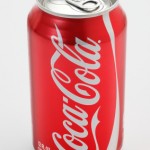With social media the it thing, it’s no surprise that Coke and Pepsi have spent huge amounts in trying to “create a conversation” about their flagship brands. So far, it appears they’ve bombed. In the latest issue of the popular Dim Bulb marketing blog, the always readable Jonathan Salem Baskin describes how both Coke and Pepsi have little if anything to show for their expensive forays into social media.
 But should that really surprise us? What is there, really, to say about yesterday’s iconic sodas? As Baskin points out, both brands are essentially generic, but for what decades of skillful marketing has made us think about them. The advertising and promotion on which these brands have been built is one-way communication. When we open things up to dialogue, what exactly is it that the twitterati have to forward to their flocks?
But should that really surprise us? What is there, really, to say about yesterday’s iconic sodas? As Baskin points out, both brands are essentially generic, but for what decades of skillful marketing has made us think about them. The advertising and promotion on which these brands have been built is one-way communication. When we open things up to dialogue, what exactly is it that the twitterati have to forward to their flocks?
Without anything of interest for people to share in the social media space, brands with slipping relevance, like Coke and Pepsi, risk looking like old folks dancing at a wedding. Yes, they may have mastered the steps and you may admire their pluck, but they look somewhere between quirky and quaint.
These giants of Marketing Yore would be better served creating something meaningful that people can’t wait to share. Digging into both their brand essence and their deep pockets, they have the stature to create and fund imaginative and relevant programs that help real people–perhaps tomorrow’s customers. Certainly that’s better than fueling expanding waistlines and empty brand blather.


